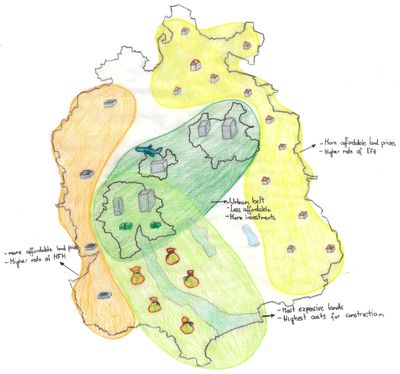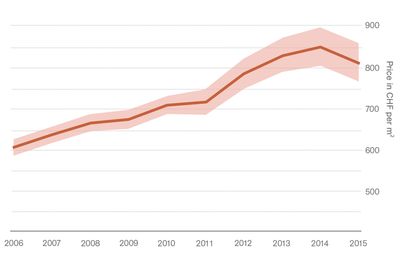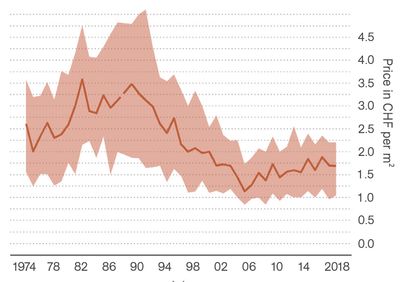AtlasProperty and Real-EstateBruno de Almeida Ferreira and Alessandro Paterniti Barbino
The canton of Zurich is the central core of economics in Switzerland, its financial power is clear readable throughout the canton itself. Gathering all available data, Zurich is quite secretive when it comes to sharing information of ownership of properties, which in comparison to other cantons is quite the opposite. Concerning the investments in building sector, real estate or land prices there is a clear subdivision. Zurich City leading the charts with a vast majority and Winterthur following it with also significant figures. Questioning the topic of this semester, if the division of urban-rural life is relativizing, will we also see this when it comes to economics?
However when we analyze the investment per capita in new housing, it shows that in urban centers like Zurich City and Winterthur are more likely to invest in infrastructure, due to the high land prices and also built density, while in the surroundings we encounter a greater availability of buildable zones for much more affordable prices. When it comes to what type housing is built or yet to be built (single family houses EFH and multi family houses MFH), there are clear tendencies in the canton, showing the EFH are more like to be encountered around the urban centers, while MFH are likely to be found across the whole canton, only differentiating in the size of rooms. In relation to vacancy of apartments the the proportion is positively non-existent.
Availability of Ownership Data
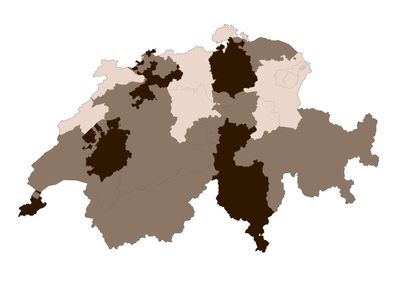
Online register of cantons and federal offices.
Source: Federal Office for the Environment FOEN
- Full Transparency (Availability of Ownership, Property & Location Data)
- Semi Transparency (Availability of Property & Location Data)
- No Transparency (Availability of Location Data)

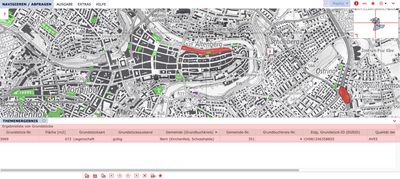
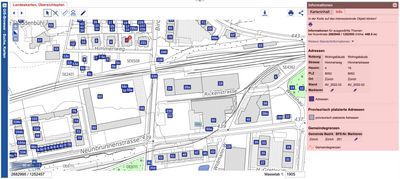
Looking up the online register availability of the cantons in Switzerland, one can clearly identify that the so called “Kantönligeist” (engl. cantonal spirit) is a common thing, basically the federalist ideology on which Switzerland was founded on. This has truly an influence on what sort of data is online available to citizens. Having three transparency degrees. Starting from the brightest of full transparency, which includes the information of the owner, property measurements and its location. Followed by the semi transparent, which only has information on the property measurements and location. Ending with the lack of transparency, where there is only the address of the property available. Above are three example of such cantons on their degree of transparency.

Forest ownership in the Canton of Zürich (2021). Source: GIS Browser of Canton Zurich
- Public (Federal governement, municipalities, Kanton)
- Private (Corporations, private forest ownership)
- Unknown
The canton Zurich area is surrounded by agricultural land and forests. About 30 % of all cantonal land is occupied by forests. About 48 % of the forests in the entire canton are in the hands of private owners. The remaining part is owned by the confederation (1 %), the canton (7 %), political municipalities (32 %) and corporations (12 %).
Lake View Pays Out
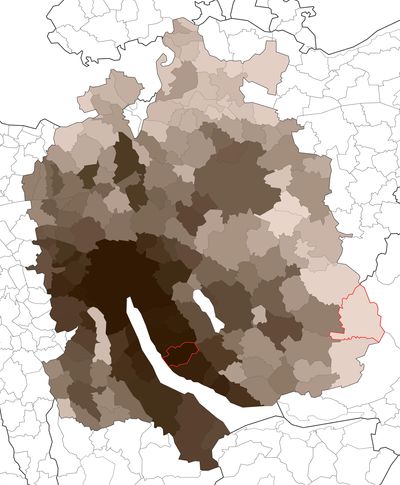
Land price per sqm in the Canton of Zürich (2020). Source: Community Portrait of Canton Zurich
- 274.00 CHF/sqm (Fischenthal)
- 2396.00 CHF/sqm (Herrliberg)
In the canton of Zurich the highest land prices are found in the most attractive areas of the canton, i.e. in the urban area of the city of Zurich and lake shore communities, plus the urban area of Winterthur. The city core is attractive because of the high offer of jobs and the charm of urban life. The most expensive land per square meter is found in the municipality of Herrliberg, while if we want to find more affordable prices we have to move to the North and East of the cantonal area. Where the municipality of Fischenthal holds the lowest price for land.
Regional Evolution of Real Estate Prices
Throughout the canton, as in the rest of Switzerland and the world, in the years following the 2008 crisis, caused by the bursting of the real estate bubble, the price of real estate soared. The rise in property values was then slowed by the outbreak of the global pandemic due to Covid-19. However, in the years from 2010 to 2020, the average real estate value of single-family houses (EFH) increased by 45 %, while that of multi-family houses (MFH) increased by 35 %.
Urbanization Has Its Price

2010-2020 Investments in building sector (Mil. CHF). Source: Community Portrait of Canton Zurich
- 10–50 mil. CHF
- 50–100 mil. CHF
- 100–265 mil. CHF
- 265–741 mil. CHF
- 3975 mil. CHF
Over the last 10 years, billions have been invested within the canton in the building sector. The largest figures belong to the City of Zurich, but it is important to point out that this city has invested more than five times as much as another urban area like Winterthur.

2010–2020 Investments in building sector (CHF/Inh). Source: Community Portrait of Canton Zurich
- 949 CHF/Inh (Regensberg)
- 19684 CHF/Inh (Kloten)
The flow of money invested in construction revolves around the urban areas of the city of Zurich, Winterthur and their environs, but small municipalities should not be neglected. These have invested a great deal in relation to their number of inhabitants and are going second map: through a phase of great development dictated by the interest of the population in living in quiet areas while remaining close to the city. Among these, the case of Aesch stands out.
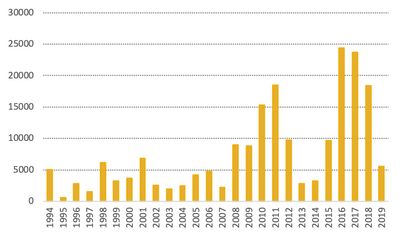
The small municipality of Aesch has experienced an explosion of investment in the construction sector in recent years due to the construction of Westum fahrung Zurich. The road guarantees fast connections to the city center and has therefore generated strong interest in Aesch.
More People, Denser Spaces
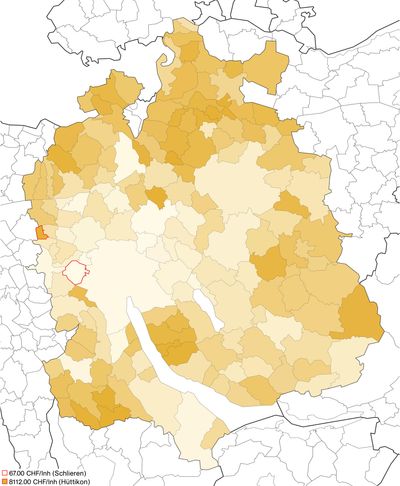
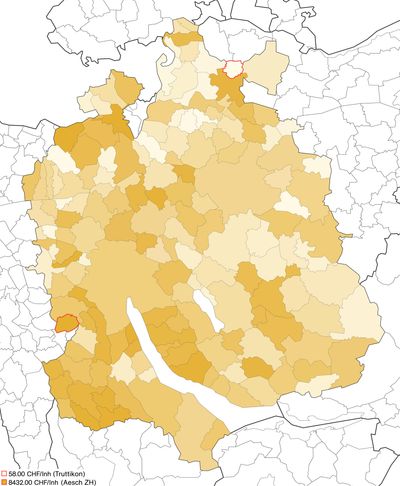
Intuitively, the construction of new single family units (EFH) has gone to concentrate on the more peripheral and green areas of the canton, at the same time the urban areas and their suburbs have opted for the construction of multi-family houses (MFH), thus providing a greater densification of the urban fabric. However, there is no lack of borderline cases such as the municipality of Weiach, which has invested significant amounts of money in both directions.
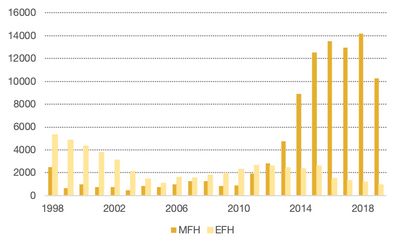
Size Matters
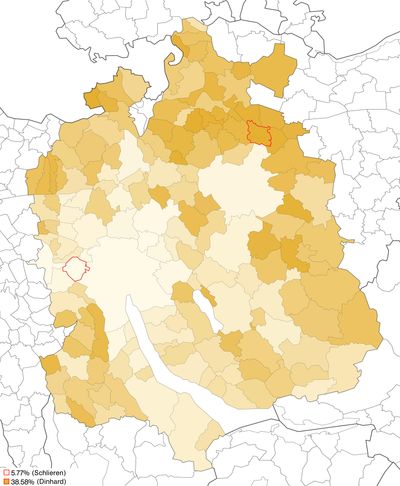
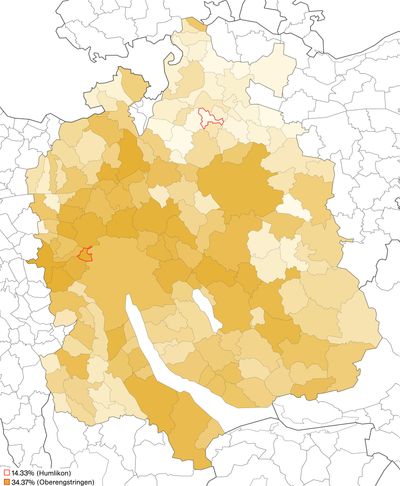

The urban area of the canton Zurich and its surroundings has a low rate of small apartments (1–2 rooms), on the other hand it is very dense of medium sized apartments (3–4 rooms). In the city, however, spacious apartments (5–6 rooms) predominate. From this we can conclude that the City of Zurich, like the rest of the canton, is a place where it is pleasant to live and not a place where only stays to work or study.
Pushing Private Ownership to the Outskirts
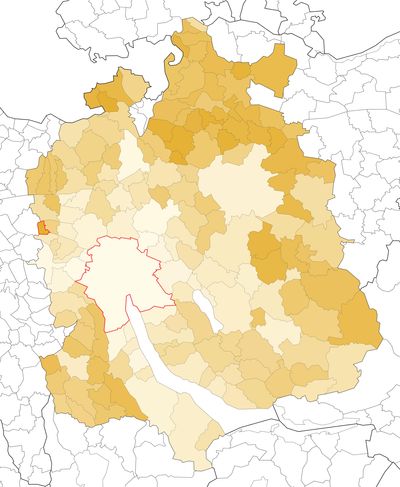
Proportion of single family houses in 2021. Source: Community Portrait of Canton Zurich
- 4.1 % (Zurich City)
- 62.7 % (Hüttikon)
In the peripheral villages of Canton Zurich, the rate of property ownership is significantly higher. People in these municipalities invest their life savings to build a solid future strengthened by homeownership. In the urban reality this rate is lower, here to be homeowners is much more difficult in comparison with external areas: for a number of regulations and economic issues. This is not only the case of the city of Zurich, but it happens in a multitude of other urban contexts around the world.
Regional "Uncertainties"

Proportion (%) of empty apartments in the canton of Zürich in 2021. Source: Community Portrait of Canton Zurich
- 0.0 % (Wildberg)
- 4.16 % (Aeugst am Albis)
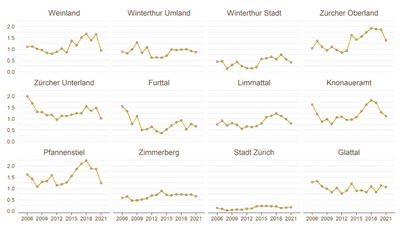
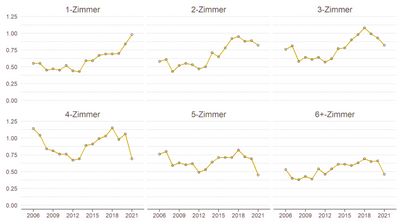
The “highest” percentages of vacant housing are found outside of the canton urban centers. As can be seen from the graphs, this phenomenon affects the regions of the Zurich Oberland, the Zurich Unterland and Pfannenstiel the most. While on average the dwellings that have a higher rate of inhabitation are the smaller ones.
